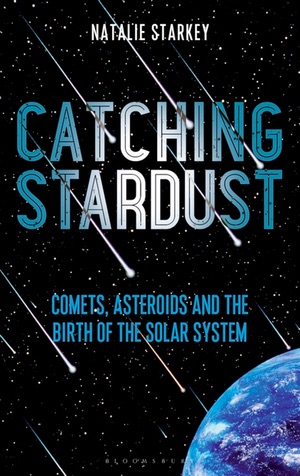Review: Catching Stardustby Jeff Foust
|
| “Without understanding the basic building blocks of the Solar System, the comets and asteroids, we can’t begin to comprehend how the planets, and everything they contain, were formed,” she argues. |
Of course, when most people think of asteroids in particular, they’re less interested in their science than in their roles as either resources for humanity’s future or threats to its survival on Earth. Each topic gets a chapter of its own late in the book, although events in some cases have overtaken their contents: the chapter on space mining, for example, refers to the Google Lunar X PRIZE and NASA’s Asteroid Redirect Mission in the present tense, although the Google-funded prize has expired and ARM has been cancelled. The chapter on impact threats mentions ESA’s Asteroid Impact Mission which was to fly with NASA’s Double Asteroid Redirect Test mission to test asteroid deflection techniques; DART will be going it alone after ESA decided not to fund development of AIM.
Starkey also profiles a couple of the missions that have contributed to our knowledge of comets and asteroids: NASA’s Stardust spacecraft that flew past a comet and collected dust samples for return to Earth, and ESA’s Rosetta mission to the comet 67P/Churyumov–Gerasimenko. Surprisingly, JAXA’s original Hayabusa mission isn’t similarly profiled, and only mentioned in passing in several places in the book, despite being the first and, to date, only mission to return samples from an asteroid. (The fact that Hayabusa was able to do so despite a series of significant technical problems makes it all the more interesting, and dramatic enough to warrant several feature films in Japan.)
Overall, Chasing Stardust is a basic, but detailed, account of the studies of asteroids and comets and why they’re important to understanding the solar system. The book isn’t a first-person account of her own research, or profiles of people involved in this field; she focuses on the science, not the people doing it. But if you’re wondering why there’s such interest in sending spacecraft to asteroids and comets—and in some cases coming back with samples of them—this book is a good place to start to learn more about the solar system’s small, but important, bodies.
Note: we are temporarily moderating all comments subcommitted to deal with a surge in spam.
